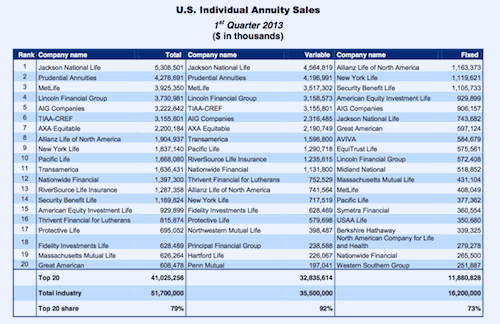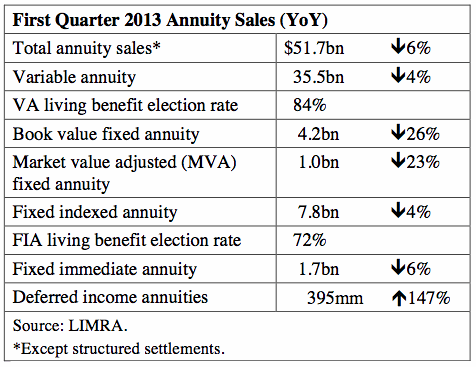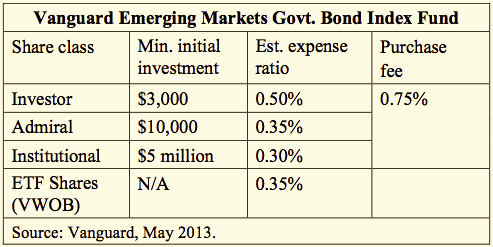The idea is simple enough and has become widely appreciated—particularly after James Poterba named it the ‘asset meltdown hypothesis’ back in 2001.
Young adults are too busy providing for children and saving to buy a home to put much away in stocks and bonds, but as they hit their late 30s and 40s those kids are costing them less, their income is at its peak and thoughts of retirement encourage them to invest to grow their pension funds. Approaching retirement, they begin to swap their equities for bonds to reduce their risk, and ultimately for cash to fund their consumption.
Now combine that behavioral cycle with the demographics of the developed world. The ‘baby boom’ of 1945-64 led to a huge population reaching its 40s and 50s between the late 1980s and today: the youngest are selling equities in preparation for retirement; the oldest are cashing in bonds as they head deep into their golden years.
Who will buy those assets from them? There are too few 40-somethings to meet that supply, and their disposable income is stagnating. Add in increasing longevity and the equilibrium point depresses further as the boomers consume more of their wealth, rather than passing it to the next generation for free. Cue the ‘asset meltdown’.
So much for the hypothesis. What about the real world?
Our first chart group tells the demographics story. Since 2010, growth in the working-age population has been falling everywhere, leading to rapidly rising old-age dependency ratios. Of the world’s 10 largest economies, only India enjoys a dependency ratio lower than the world’s weighted average. The picture is particularly troubling for the US, Europe and Japan, which account for three-quarters of the world’s financial assets, but this is a global issue.
This is not controversial. But are there empirically observable links between demography and economic and financial asset performance?
There has been no shortage of studies. Among the more recent, a 2012 paper by Robert Arnott and Denis Chaves of Research Affiliates considered the relationship between the age profile of the population and real per-capita PPP-adjusted GDP growth for more than 150 countries over 60 years. They found that contribution to the next five years’ GDP growth peaked when a population was most concentrated in the early 30s, but began to tail off rapidly by the late 30s – turning negative by the mid-50s and taking as much as 1.5 percentage points annually off of growth for every 1% of extra concentration in the over-70 cohort.
“While society’s GDP depends heavily on mature adults, growth depends on young adults – the so-called demographic dividend,” Arnott explains.
Projecting forward, Arnott and Chaves estimate that Finland, for example, would lose 3.2 percentage points of growth between 2011 and 2020 due to demography, and Germany 2.6 percentage points. Similarly, a 2009 study by Ronald Schoenmaeckers and Thierry Vergeynst of the Research Centre of the Flemish Government concluded that demographic change in the EU15 member states could imply a five percentage point reduction in GDP out to 2020.
This is intuitive – more stuff being made by more people grows GDP. The peak productivity of our 40s and 50s, by definition, equals zero contribution to productivity growth. Past 50, we start to wind down our careers. Past 65, our demands for state pensions and healthcare add to debt burdens, with all the pressure on GDP growth that implies, according to the work of Carmen Reinhart and Kenneth Rogoff.
Mixed
The connection with financial assets is perhaps less intuitive. Around the dotcom bubble, commentators such as Poterba, Robert Shiller, Amit Goyal and Robin Brooks began to speculate that the 20-year equity bull market had been driven by boomers, and would go bearish once they began to retire.
Recent studies of the statistical relationships include a 2011 study for the Federal Reserve Board of San Francisco by Mark Spiegel and Zheng Liu (which found equity market P/E ratios rising in line with the proportion of the population at peak saving age), and a March 2013 paper from Morgan Stanley Research (which looked at both US equities and bonds).
Figures 5 and 6, from the Morgan Stanley paper, certainly show a relationship between the number of 35 to 59-year-olds, the S&P500 Shiller P/E ratio and 10-year Treasury yield – but are those R-squared coefficients persuasive, given the strength of the bull market and the size of the demographic effect?
Some are reluctant to rely on statistics in the absence of a convincing economic rationale. Russ Koesterich, chief investment strategist at BlackRock and author of another recent report on this subject, reckons evidence of a demographic impact on financial assets is “more mixed” than that on GDP growth, and sets more store on studies that draw connections with bond bull markets than with equity markets.
“The mechanisms are better-understood,” he suggests. “Real interest rates are correlated to GDP growth and older people have a preference for income in their investments. They also borrow less, so the demand for capital goes down, exerting some more downward pressure on real rates.”
This is where the 2012 study by Arnott and Chaves makes a key contribution. Their methodology moves away from ad-hoc demographic cohorts (36-45 years old, 46-55 years old, and so on, or simply ‘the working-age cohort’) towards fitting to a curve that delivers a smoother representation of behavioral change between adjacent cohorts: a 36-year-old might be in the 36-45 cohort, but probably behaves more like a 34-year-old than a 45-year-old. Combined with controls for other exogenous effects, the result was, in Arnott’s words, “t-statistics that were miles beyond what previous studies had achieved”.
Arnott and Chaves considered the historic relationship between the age profile of the population and the next five years’ returns, above cash, from equities and bonds. For equities, age concentration before the late 20s reduces subsequent returns. The effect then becomes positive until a peak in the late 40s and early 50s, with every 1% of extra concentration in the 50-54 cohort delivering almost one percentage point of additional future annualised return. As populations move out of their 50s, excess future returns plummet, turning negative in the mid-60s and hitting more than -1.5 percentage points for every 1% of extra concentration in the over-70 cohort.
In bonds, the pattern of low contribution to future returns in young adulthood turning to peak contributions in the mid-50s is the same, but the subsequent falling-off is much shallower – an extra 1% concentration in the over 70s cohort only saps around 0.25 percentage points from subsequent returns.
Opportunities
What does all this mean for investment strategy? Arnott and Chaves do a simple projection of their correlations onto the world’s demographics for the next 20 years to give us a starting point. The short side looks more interesting than the long, especially for equities: Japan, Finland and Sweden look like markets to sell, as far as demographic impact is concerned.
Isolate the OECD and emerging market countries, and we see that Ireland and Spain’s bonds could enjoy an extra 5-6 percentage points of return thanks to their age profiles, Mexico and Turkey’s equity markets could be boosted by more than 11 percentage points and Korea looks a sure thing. Among emerging markets, Thailand tops the equity table with an excess demographic return of almost 14 percentage points.
Common to most developed countries are negative values for GDP growth and positive values for excess bond returns – investors should perhaps resist the temptation to sell these countries’ bonds just because some of them look expensive. But it may also pay not to dismiss their equity markets out of hand, either, but to be selective.
“High-quality growth stocks should be the long-term winners, as the scarcity of growth will result in an increasing premium, and they will offer the best prospects for meeting ambitious long-term return assumptions and hedging longevity risk,” suggests Virginie Maisonneuve, head of global and international equities at Schroders.
The Morgan Stanley researchers reach a similar conclusion, and also suggest companies meeting demand related to an ageing society, such as cruises in the leisure sector, hearing aids in healthcare and robotics in capital goods.
Recognizing that most of the world’s growth is now going to come from outside the OECD, Maisonneuve also expects investors’ shift into global products to continue. But the insights into global asset allocation from Arnott and Chaves’ research are subtle. Recall that their findings suggest that when an economy’s age profile is set fair for GDP growth, you probably don’t want to buy its equities or bonds. The time for that is when everyone is in their 50s. Korea tops out for equity and bond excess returns but flunks for excess GDP growth. The story is similar for China.
This identifies two profoundly different global demographics-related investment opportunities. In countries with a young-adult profile (which tend to be in the emerging world), there is a fundamental growth opportunity that has little to do with their local financial markets (which tend not to be domestically-focused). The best call on that might be assets such as infrastructure or local currencies. In equities, the best bet might be developed-market multinationals with high exposure to these youngsters’ consumption, rather than the local miners and manufacturers.
However, countries like Korea and China offer a technical supply-and-demand opportunity in financial assets. Arnott and Chaves show us how we know that this is a technical effect: if those assets were pricing-in the economic growth from all of those 50-somethings retiring in 10 years’ time, they would be in precipitous decline. The difference is important: it doesn’t matter what the companies are selling, or to whom they are selling it – the locals will buy their stock, in any case, to fund their retirement.
“This certainly argues for the approach that we take, which is to favor solid, all-round asset managers running global unconstrained mandates, rather than regional or sectoral specialists,” says Marcus Whitehead, a partner at Barnett Waddingham. “But, ultimately, I think these insights are interesting but difficult to make use of. You hear these arguments so many times but as soon as you begin to think about the potential offsets you realise just how dynamic and difficult to model this whole system is.”
Caveats
Indeed, in one sense the empirical observations from the past 60 years’ sample are almost useless when we move out-of-sample. “We’re really in uncharted territory,” says Koesterich. “We all need to approach this question with some humility, because there is no precedent for people reaching the age of 90 en masse.”
Arnott and Chaves are the first to concede this. Chaves likens it to the evolution from Newtonian to Einsteinian physics. “The problem isn’t so much things you are not controlling for in your model – it’s that your entire toolkit is no longer fit for purpose in such a totally different environment,” he reasons. Some of their projections are so extreme, they observe, that the prospect will almost certainly draw an offsetting response from investors, society and governments.
There are six major caveats to the ‘asset meltdown’ hypothesis. The first two – demographic effects get washed out by short-term market noise, or must already be priced-in – are the easiest to discount. The rest – increasing globalisation, concentration of financial assets with the wealthiest retirees, our potential to lengthen our working lives, and to hold risky assets for longer to match our increased longevity – are stickier.
“I’ve long thought that demography is much more important than people give it credit for,” says Arnott, attacking the idea that demography is just the least factor among many. “Our industry has become too short-term-oriented. Suppose stock returns are boosted or impaired by five percentage points per annum by demographic effects. Would we notice that year-to-year? Probably not, given everything else that goes on. But would it matter? Tremendously. If your risk premium has changed by that amount it should have an enormous effect on your normal allocation.”
The fact that equity market valuations are still fairly depressed lends some credence to the argument that the ‘asset meltdown’ is already priced-in. Figure 10 indicates that, based on past correlations, today’s demographics may deserve a much higher US equity market valuation than we currently enjoy.
But Arnott and Chaves again emphasize that the inter-temporal market inefficiencies related to demography are purely technical. “The inefficiency doesn’t arise because some people have information that others do not,” says Chaves. “It is something much stronger – the massive weight of sellers negotiating with buyers.”
By that logic, today’s weak valuations should be attributed to recession – and the demographic impact will be an extra negative on top of that.
A more serious objection is that much of the empirical evidence comes from markets and economies that were less open than they are today. Freer movement of people and capital means that projections of demographic profiles can be affected by migration, and that the link between each population and its domestic markets is weakened. What does it matter if elderly Swedes sell equities, as long as middle-aged Thais buy them?
And maybe those elderly Swedes won’t sell off their financial assets, anyway. The Morgan Stanley researchers point out that financial-asset wealth tends to be concentrated in the richest decile of the population. Research by the Congressional Budget Office suggests that the wealthiest 1% of US baby boomers own almost one-third of the cohort’s financial assets (and can live off the income without selling), while 30% do not own any financial assets at all. This is a double-whammy against the ‘asset meltdown’ thesis: not only are the owners of financial assets not selling, by passing wealth down they boost the saving generation’s capacity to buy financial assets, too.
Moreover, if the affluent have much more than they need to survive retirement but the indigent have much less, policies to redress the balance and relieve the burden on the state are likely.
“When I’m speaking on demography I get the audience to put up their hands if they were born after 1964,” says Arnott. “Then I ask them to keep their hands up if they see these unfunded promises that my generation made to itself as sacred obligations. Once in a while one or two stay up. Entitlement programs will surely change into welfare programs for the indigent elderly – if you can support yourself, sorry, you are out of the loop. That would have a profound impact on the relationships we’ve been studying.”
Henk Grootveld, head of thematic investing at Robeco, thinks this is already happening. “Japan, which is furthest down this baby-boomer path, is discussing an increase in inheritance tax as a stimulus – to encourage older people to spend their money or give it to their kids while they are still alive,” he observes. If they spend, the rush to cash would support the ‘asset meltdown’ thesis. But if they pass the wealth down before they die, that thesis goes out the window.
Productivity is another big variable that could significantly mitigate ageing effects. The worldwide demographic story is one of ageing, but also of urbanization – one of the surest ways to improve productivity. Another way is to make people work longer, which not only delays the depressive effect of retirement on GDP growth, but also extends the saving period and puts off the point at which retirees need to liquidate their financial assets.
People are certainly retiring later. Is that simply a response to pension funds being dented by the financial crisis? Or is it a longer-term recognition that more wealth is required to finance longer life and extra healthcare? Any move towards the latter could also change attitudes to financial risk in old age.
“If the time horizon for a retired couple is now a quarter-century it doesn’t make sense for them to have 100% of their savings in bonds,” as Koesterich puts it. “They should have a significant portion of their portfolio in assets that will maintain purchasing power, including equities.”
Work is happening in DC default funds to make the transition from savings-period assets to retirement-period assets less of a cliff edge, and increasing numbers of retirees are choosing income drawdown – and retaining more equities in their portfolio – over predominately bond-backed annuities. Again, Japan may be a window into these new saving and investment behaviors.
Figure 7a shows how rapidly Japanese investors started allocating to higher-yielding foreign bonds after 2000. Similarly, the past four years have seen US and European investors move into foreign bonds, especially emerging market bonds. They have also bought assets like high-yield debt and the kind of high-quality equities identified by Maisonneuve and the Morgan Stanley.
“You have a rotation into equities-that-look-like-bonds and into bonds-that-look-like-equities,” as Koesterich describes it.
If this is the first manifestation of the boomers’ retirement investment strategy, the ‘asset meltdown’ thesis is dead in the water. Maisonneuve suggests that recent equity inflows challenge the “conventional wisdom”, arguing that equities will “remain central to long-term investing given rising life expectancies and chronic underfunding of pension plans”.
Whitehead acknowledges the logic – “If PepsiCo is the new 20-year Treasury, that can change the whole supply-and-demand dynamic for equity markets” – but is ultimately sceptical and puts the staples-led rally down to “short-term mispricing”. Koesterich points to investor caution after the trauma of two crashes in one decade.
Phil Edwards, an investment partner with Mercer, points out that this kind of defensive equity rally is not so unusual after banking crises. “It would seem to me to be more of a quantitative-easing and liquidity-driven market than anything to do with baby boomers retiring,” he suggests. Grootveld also points to the necessity to step out along the risk curve to achieve some reasonable yield. Maybe it’s a boomer thing, he muses, but it’s much easier to explain it with today’s other prevailing conditions.
But that leaves us with another, final question. If the negative real interest rate environment is something we expect to see ‘correct’ itself, we might expect a demographics-led sell-off of equities, eventually, for higher-yielding bonds. But what if negative real rates are here to stay – precisely because of depressed demand for credit from an elderly population?
It is yet another reminder of the complexity lurking behind the simple-sounding ‘asset meltdown’ hypothesis. While the nature of the historical correlations between demography, growth and asset returns may be just about settled, the future projections of those relationships are anything but.




 “Just because an event was broadly missed, that doesn’t make it unpredictable,” Werther said. “In many cases, someone, or many people, foresaw it and were ignored.” That was the case in the 2008 financial crisis, where many writers pointed to the dangerous over-expansion of leveraged lending years before the actual crash.
“Just because an event was broadly missed, that doesn’t make it unpredictable,” Werther said. “In many cases, someone, or many people, foresaw it and were ignored.” That was the case in the 2008 financial crisis, where many writers pointed to the dangerous over-expansion of leveraged lending years before the actual crash. Hodgson (left), whose Thinking Ahead Group has published annual rankings of systemic threats to civilization, explained that we often, and foolishly, rely on averages of alternate outcomes in order to evaluate a decision—as though we could experience all of those outcomes and arrive at a net gain or loss.
Hodgson (left), whose Thinking Ahead Group has published annual rankings of systemic threats to civilization, explained that we often, and foolishly, rely on averages of alternate outcomes in order to evaluate a decision—as though we could experience all of those outcomes and arrive at a net gain or loss.
 I assume investment expenses of 0.15%. These returns are significantly lower than historical averages and reflect the reasoning in my February 2013 Advisor Perspectives article on asset class returns. Because I’ve assumed lower-than-historical returns, I’ve reduced the withdrawal assumption to 3%, from the more typical 4% used in retirement planning research. (Photo of Joe Tomlinson. This article originally appeared in
I assume investment expenses of 0.15%. These returns are significantly lower than historical averages and reflect the reasoning in my February 2013 Advisor Perspectives article on asset class returns. Because I’ve assumed lower-than-historical returns, I’ve reduced the withdrawal assumption to 3%, from the more typical 4% used in retirement planning research. (Photo of Joe Tomlinson. This article originally appeared in 





